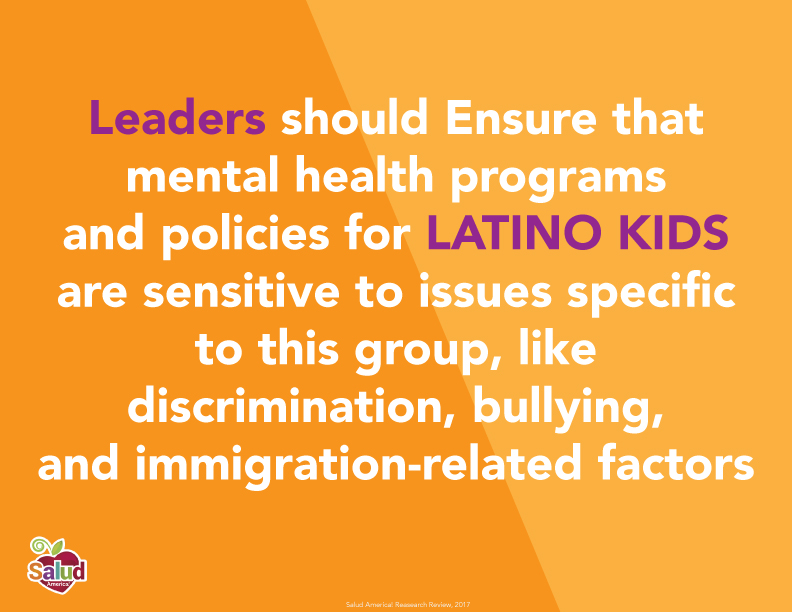
Share On Social!
This is part of our Mental Health & Latino Kids: A Research Review »
Conclusions
Latino children and adolescents are disproportionately affected by mental health problems compared to their peers, especially Latinas, who have the highest rates of suicidal ideation and suicide attempt of any group.
- The factors affecting the mental health of Latino youth are complex and include the immigration process, acculturation, poverty-related stress, bullying, and discrimination.
- Latino children are less likely to receive help for mental health problems, and their parents are less likely to recognize and seek help for their children’s mental health issues.
- The barriers to the receipt and use of mental health services among Latino children include cultural differences in the perception of mental health between Latinos and U.S. Americans, language barriers, and Latino parents’ mistrust of school and medical professionals.
- Interventions aimed at increasing participation in physical activity have had a positive effect on the mental health of Latino youth.
- Several interventions have demonstrated success in improving mental health and access to mental health services, especially those using community-based, culturally-informed models.
Policy Implications
Program leaders, school leaders, healthcare providers should ensure that mental health interventions for Latino immigrant children are sensitive to issues specific to this group, including bullying, acculturation, discrimination, and other immigration-related factors.
- Program leaders and healthcare providers should include parental mental health education and involvement for successful mental health interventions.
- Program leaders and healthcare providers should consider that some parents and children may be more comfortable interacting with a Spanish-speaking or bilingual mental health professional or a promotora.
- Community centers and nonprofit organizations that are easily accessible to immigrant families should consider incorporating culturally-relevant mental health programs into other programs, especially those that include physical activity and wellness.
- Schools should utilize the Whole School, Whole Community, Whole Child approach to incorporate community engagement, school staff education, and the family-school connection to address multiple factors influencing the mental health of Latino children.
More from our Mental Health & Latino Kids: A Research Review »
- Introduction & Methods
- Key Research Finding: Issues facing Latino kids
- Key Research Finding: Latino kids access to care
- Key Research Finding: The migration experience
- Key Research Finding: Latino family issues
- Key Research Finding: Latino community and school issues
- Key Research Finding: Programs with promise
- Key Research Finding: Policies with promise
- Policy Implications (this section)
- Future Research Needs
References for this section »
None
Explore More:
Healthy Families & SchoolsBy The Numbers
142
Percent
Expected rise in Latino cancer cases in coming years



